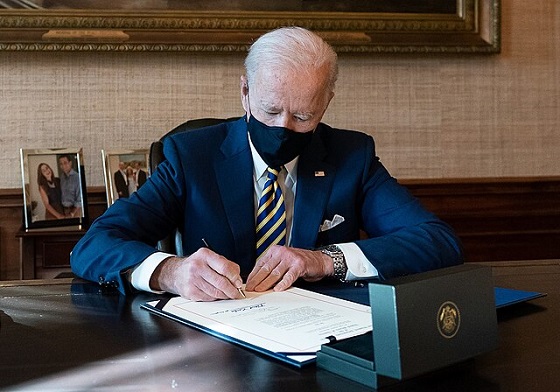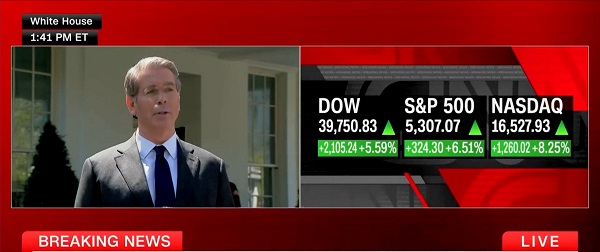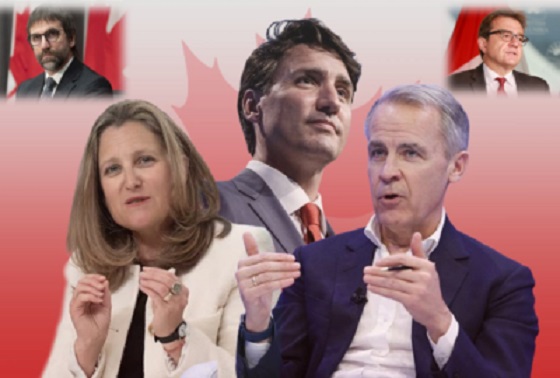Business
Red Deer’s Poor Air Quality Reputation Going Up In Smoke?

(Dr. Warren Kindzierski PhD, MSc, BSc – Associate Professor – School of Public Health – University of Alberta)
By Sheldon Spackman
An Associate Professor in the U of A’s School of Public Health is trying to clear the air when it comes to Red Deer’s reputation for poor air quality. Dr. Warren Kindzierski first caught wind of the issue in 2015 when news stories claimed Red Deer had the worst air quality in the province. Kindzierski says that didn’t make any sense to him and his colleague, Aynul Bari. The two spent a considerable amount of time in the summer of 2016 looking into the claims and found something much different. He says as far as he can see “Red Deer doesn’t have an air quality problem, it’s mostly good.”
Kindzierski and Bari set out to answer the questions that most interested them such as: Where are Red Deer’s emissions coming from? Are there issues that need to be addressed? and How does Red Deer’s emission levels compare to other communities in Alberta?
In a special report he penned for The Financial Post, Kindzierski says he and Bari “Studied data from an air-monitoring station in Red Deer using state-of-the-art scientific methods and had the results peer reviewed and published in the February edition of the international journal Environmental Pollution. They “Looked at methods for identifying sources within and outside of Red Deer. These included using the U.S. Environment Protection Agency Positive Matrix Factorization model, and a U.S. National Oceanic and Atmospheric Administration meteorological model for air parcel backward trajectory analysis.”
According to their study almost two-thirds of the fine-particulate-matter air pollution in the Red Deer area comes from vehicle, industrial and agricultural emissions. Kindzierski says air quality is often poorest in the winter months when it’s colder, as pre-cursors or conditions that lead to the creation of fine-particulate-matter air pollution tend to stick around longer.
Looking at air quality trends in Alberta, Kindzierski says fine-particulate-matter air pollution in Edmonton, Calgary, Fort McMurray and Fort McKay, hasn’t changed in the last 17 years.” His results also show “Red Deer has better air quality than Calgary.” He notes however that their study excluded days where PM2.5 levels were high due to smoke from forest fires, so as not to skew the results.
The following chart created by the University of Alberta researchers shows the three-year average fine-particulate-matter levels from 2010 to 2015 in Calgary, Edmonton and at Red Deer’s Riverside air monitoring station.

Dr. Kindzierski’s study is welcome news to the Red Deer Chamber of Commerce. Policy Manager Reg Warkentin says this validates what he has believed all along.
Business
Musk Slashes DOGE Savings Forecast By 85%


From the Daily Caller News Foundation
By Thomas English
Elon Musk announced Thursday that the Department of Government Efficiency (DOGE) is now targeting $150 billion in federal savings for fiscal year 2026 — dramatically scaling back earlier claims of slashing as much as $2 trillion.
Musk initially projected DOGE would deliver $2 trillion in savings by targeting government waste, fraud and abuse. That figure was halved to $1 trillion earlier this year, but Musk walked it back again at Thursday’s Cabinet meeting, saying the revised $150 billion projection will “result in better services for the American people” and ensure federal spending “in a way that is sensible and fair and good.”
“I’m excited to announce we anticipate saving in FY ’26 from a reduction of waste and fraud a reduction of $150 billion dollars,” Musk said. “And some of it is just absurd, like, people getting unemployment insurance who haven’t been born yet. I mean, I think anyone can appreciate — I mean, come on, that’s just crazy.”
The announcement marks the latest in a string of revised projections from Musk, who has become the face of President Donald Trump’s aggressive federal efficiency agenda.
“Your people are fantastic,” the president responded. “In fact, hopefully they’ll stay around for the long haul. We’d like to keep as many as we can. They’re great — smart, sharp, finding things that nobody would have thought of.”
Musk originally floated the $2 trillion figure during campaign appearances last fall.
“I think we could do at least $2 trillion,” Musk said at the Madison Square Garden campaign rally in November. “At the end of the day, you’re being taxed — all government spending is taxation … Your money is being wasted, and the Department of Government Efficiency is going to fix that.”
By January, he softened expectations to a “really quite achievable” $1 trillion target before downsizing that figure again this week.
“Our goal is to reduce the deficit by a trillion dollars,” Musk told Fox News’ Bret Baier “Looked at in total federal spending, to drop the federal spending from $7 trillion to $6 trillion by eliminating waste, fraud and abuse … Which seems really quite achievable.”
DOGE’s website, which tracks cost-saving initiatives and contract cancellations, currently calculates total federal savings at $150 billion.
2025 Federal Election
Taxpayers urge federal party leaders to drop home sale reporting to CRA

Party leaders must clarify position on home equity tax
The Canadian Taxpayers Federation is calling on all party leaders to prove they’re against home equity taxes by pledging to immediately remove the Canada Revenue Agency reporting requirement on the sale of primary residences.
“Canadians rely on the sale of their homes to pay for their golden years,” said Carson Binda, CTF B.C. Director. “After the government spent hundreds of thousands of dollars flirting with home taxes, taxpayers need party leaders to prove they won’t tax our homes by removing the CRA reporting requirement.”
Right now, the profit you make from selling your home is exempt from the capital gains tax. However, in 2016, the federal government mandated that Canadians report the sale of their homes to the CRA, even though it’s tax exempt.
The Canada Mortgage and Housing Corporation also spent at least $450,000 to study and influence public opinion in favour of home equity taxes. The report recommended a home equity tax targeting the “housing wealth windfalls gained by many homeowners while they sleep and watch TV.”
“A home equity tax would hurt seniors saving for their golden years and make homes more expensive for younger generations,” Binda said. “If the federal government isn’t planning on imposing a home equity tax, then Canadians shouldn’t be forced to report the sale of their home to the CRA.”
-

 COVID-192 days ago
COVID-192 days agoBiden Admin concealed report on earliest COVID cases from 2019
-

 Business2 days ago
Business2 days agoStocks soar after Trump suspends tariffs
-

 Business2 days ago
Business2 days agoScott Bessent Says Trump’s Goal Was Always To Get Trading Partners To Table After Major Pause Announcement
-

 2025 Federal Election1 day ago
2025 Federal Election1 day agoResearchers Link China’s Intelligence and Elite Influence Arms to B.C. Government, Liberal Party, and Trudeau-Appointed Senator
-

 Business1 day ago
Business1 day agoTimeline: Panama Canal Politics, Policy, and Tensions
-

 2025 Federal Election2 days ago
2025 Federal Election2 days agoRCMP memo warns of Chinese interference on Canadian university campuses to affect election
-

 2025 Federal Election2 days ago
2025 Federal Election2 days agoThe status quo in Canadian politics isn’t sustainable for national unity
-

 COVID-191 day ago
COVID-191 day agoFauci, top COVID officials have criminal referral requests filed against them in 7 states






